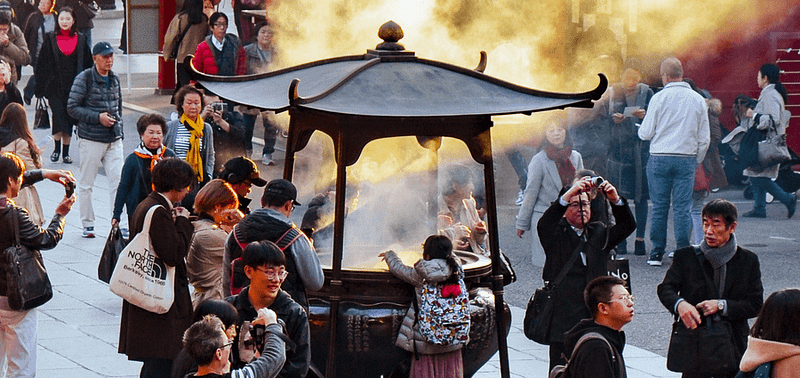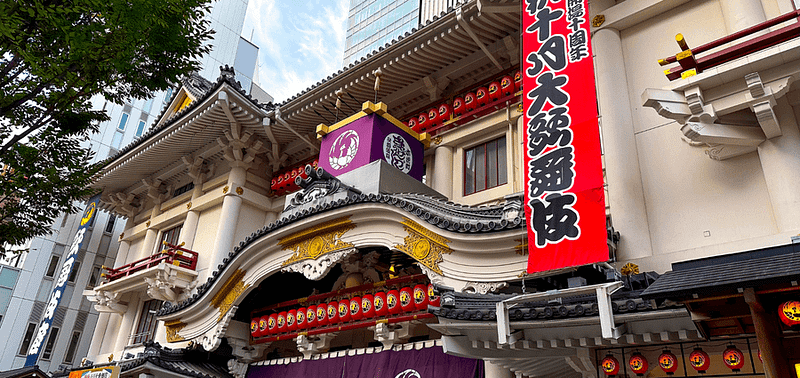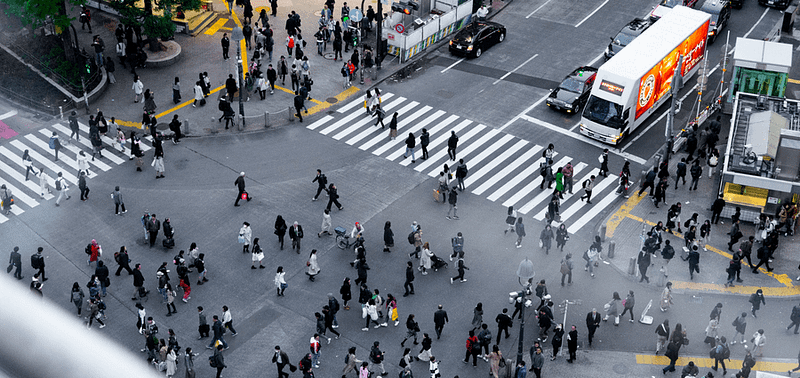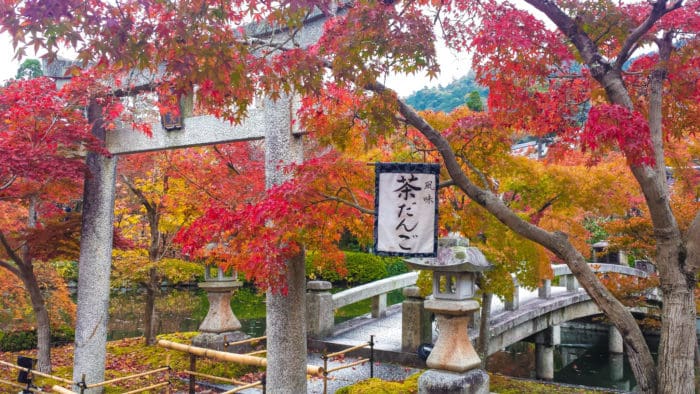Buddhism is one of the two main religions in Japan and has co-existed with its counterpart, Shintōism (神道) for many centuries. Buddhism was officially brought to Japan from China and Korea during the 6th century and was intended as a present of good-will between nations.
The arrival of Buddhism in Japan also brought with it a new writing system, political structure, superior technology, and sophisticated cultural practices which the nobles and aristocrats loved.
This is an overview article on the history of Buddhism in Japan, the main Buddhist sects and some associated rituals in contemporary Japan. Read on if you want to learn more about Buddhism in Japan!
Origins of Buddhism in Japan
First introduced as a kind of present of goodwill between nations, it is not difficult to understand why Buddhism first spread among the nobles and aristocrats. According to the Nihon Shoki (日本書紀, Japanese Chronicles) which is the second oldest historical record in Japan, Buddhism was introduced in 552. The legend mentions the Japanese Emperor consulting with his officials about whether Buddhism should be worshiped in Japan. They were divided on the issue, scared of angering the Kami, or Shintō gods.
The solution was to let the Soga Clan be the first practitioner of Buddhism as a trial to see how it was received. The Soga Clan was the most powerful aristocratic group at the time with close connections to the Imperial House and played a key role in spreading Buddhism throughout Japan in its early stages.
Initially they were met with resistance from various factions blaming Buddhism for diseases and bad fortune. However, from the turmoil that followed, the Soga Clan emerged victorious and promoted Buddhism with support from the imperial court.
Ever since, Buddhism has played a key role in Japanese history and had strong political influence. During the Nara period (710-794), the very impressive temple Tōdaiji 東大寺 became the centerpiece of Buddhism in Japan. The political influence of Buddhism became a large reason why the capital was later moved to Heian-Kyō 平安京(Modern Kyoto).

Schools of Buddhism and their associated temples
Over the years Buddhism in Japan has evolved, changed and become interconnected with Shintōism in complicated ways. Today there are six main branches of Buddhism in Japan, namely: Zen, Nara, Tendai, Shingon, Amida (Pure Land), and Nichiren.
Zen Buddhism
What’s special about Zen Buddhism is the focus on sitting meditation, or zazen (座禅) to become enlightened. Zen Buddhism is perhaps the most popular Buddhist religion in western countries due to the cultural boom of zen-meditation.
One temple where you can try out zen-meditation and space out into the void yourself – is the Nanzenji (南禅寺) temple in Kyoto.
Nara Buddhism
Nara Buddhism broadly refers to six different schools of Buddhism which were officially sponsored during the Nara period. Out of those, three have survived today, but became much less influential after the capital was relocated to Heian-Kyō.
The main temple of Nara Buddhism is Tōdaiji (東大寺), the largest wooden building in the whole world and truly a spectacular sight if you travel to Nara City.
Tendai Buddhism
The founder of Tendai Buddhism in Japan, Saichō 最澄, pledged to protect the capital and in extension, the nation of Japan. The Buddhist monk built a new temple complex on top of the overlooking mountain, Mt Hiei (比叡山 Hieizan).
Tendai Buddhism has a larger focus on “enlightenment for everyone” and created the foundation of where nearly all major Buddhism figures in Japanese history studied at some point in their career.
Shingon Buddhism
In Shingon Buddhism, true enlightenment could not be achieved by just studying and there was a heavy focus on meditation with special invocations, elaborate hand-positions and mandalas (a symbol of the universe in its ideal form).
The founder Kūkai 空海 established headquarters of this newly imported form of Buddhism on top of Mt Kōya (高野山 Kōyasan). He was made the abbot of the main temple of Tōji (東寺).
Mt Kōya today is one of the most atmospheric places you can visit in Japan and a huge recommendation to anyone regardless if you are interested in Japanese history or not.
Amida (Pure Land) Buddhism
There were two Amida sects in Heian-Kyō during the late Heian Period. These were Jōdo-shū 浄土宗 and Jōdoshin-shū 浄土真宗. The founder of Jōdo-shū, Hōnen 法然, and his student Shinran 親鸞 had studied at Enryakuji but thought that the severe self-discipline of previous Buddhist teachings were too much to handle for commoners.
Consequently they founded a new sect which promised enlightenment simply by repeatedly chanting the three words Namu Amida Butsu (南無阿弥陀仏, I take refuge in the Amida Buddha). This new religion became immensely popular since it was accessible to everyone and not just the aristocracy.
The associated temples are Chion-in (知恩院), Nishi-Honganji (西本願寺) and Higashi-Honganji (東本願寺), all remarkable temples in the Kyoto area and definitely worth your visit.
Nichiren Buddhism
Nichiren Buddhism was the answer of a group of people not happy with the new pure land Buddhism sects. They actively made enemies with the other sects proclaiming that the only true teaching to reach enlightenment was through Nichiren Buddhism and the sacred readings of the Lotus Sutra. At one time they found themselves at war with the Enryakuji warrior monks, and were defeated in a battle which burned down much of Kyoto City.
Although once almost eradicated, today Nichiren sects have bounced back and there are numerous associated temples in Japan.

Associated rituals and celebrations
Have you ever seen the spectacle where kids open the front door and throw out beans while saying the phrase “Oni wa soto, fuku wa uchi”? (鬼は外福は内, the demon goes out and the luck comes in)
This is the tradition of mamemaki (豆撒き, bean-scattering), popular during the Buddhism holiday of setsubun 節分 which takes place between 2-4 of February.
Another Buddhism-associated ritual is Obon (お盆). It is said that the spirits of one’s relatives come back and visit during summer, and for this reason there are large festivals with lots of dancing and lanterns to guide the spirits. At the end of the three days of obon celebrations, you send lanterns floating down the river in a ceremony called toro-nagashi (とろ流し, floating lanterns). This is to guide the spirits back to their world.
Buddhism in modern Japan
Buddhism has undoubtedly had a great impact on Japanese society throughout the ages. Although most young Japanese people aren’t true believers, religious customs such as visiting a temple and praying for good health remain a popular activity that almost all Japanese people do.
Other signs of the significance of Buddhism in Japan are the many traditional Japanese houses equipped with a Buddhist altar, butsudan (仏壇). And the fact that most funerals, osōshiki (お葬式) are made in a Buddhist manner.
We hope you found this article on Buddhism in Japan interesting. If you are interested in more Japanese culture or life in Japan, follow our blog!














